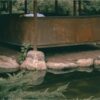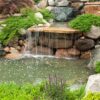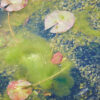
Have you been toying with the idea of building a full-fledged wildlife pond in your backyard? Well, I will be upfront with you; the process demands a lot of research since there are several aspects to it. But, fear not, you have arrived at the right place. When working on your new project, out of the many questions, you will be faced with whether or not to invest in a pond pump. So, you might want to continue reading or bookmark this article for later. If you are someone who already has a beautiful wildlife pond and are now faced with a similar dilemma, you, too, are in the right place.
What makes a wildlife pond different?
A wildlife pond is one of the various types of ponds that a man can make. By the sound of it, it seems like a water body that exclusively occurs in nature. There is some truth to the statement since wildlife ponds occur naturally, but that doesn’t mean we cannot replicate them. In fact, man-made wildlife ponds serve a great purpose.
This particular type of pond has become exceptionally important to the ecosystem, seeing how the natural ones have fallen prey to urbanization and development. By choosing to build a wildlife pond, you do a massive favor to the local population of flora and fauna. Several animals, such as frogs and salamanders, might treat it as a breeding ground, while others as a source of drinking water. A wildlife pond may promote the growth of particular plants, encouraging more insects to pollinate.
This may come as a surprise, but wildlife ponds traditionally do not have fish. This is because fish might prey on smaller animals or become food to other predators. If you fancy a fish pond, go for those.
Another great thing about having wildlife ponds is that they are low maintenance. As opposed to other artificial ponds, you do not have to be hypervigilant with a wildlife pond, just keep an eye out for the necessary indicators and let nature take its course.
What is a pond pump, and what purpose does it serve?
Let us come to the matter at hand now. Before deciding whether a wildlife pond needs one or not, we must understand what a pump does for a pond.
Unlike the sea, ocean, or river, ponds are stagnant bodies of water, i.e., the water stays in one place. A pump helps rectify that by circulating the water; this is known as aeration. The constant ebb and flow help evenly distribute nutrients and oxygen throughout the pond. The oxygen-rich water at the surface is continuously being replaced by depleted water from the depths of the pond. A pump particularly comes in handy when your wildlife pond has fish inhabiting it, as a lack of oxygen could be fatal for them. If you are wondering why that is so since they breathe underwater, allow me to enlighten you: fish utilize their gills to extract dissolved oxygen from water, so it needs to be oxygenated at all times.
Here are some additional purposes served by a pond pump:
- It amplifies the filtration system of a pond. The constant movement of the pond water prevents debris from settling; rather, a maximum amount of dirt-laden water is driven through the filter. A solids-handling pond pump pairs well with a filter and is best for this job.
- They make for a welcoming sight. You are not bound to get a clunky piece of equipment for a pump; on the contrary, you can get a waterfall or a fountain pump. The two get the job done while elevating the look of your pond. The best part is that you can mix and match different options.
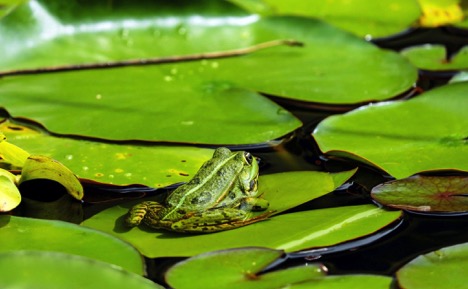
Do you need a pump for your wildlife pond?
For the most part, you do not. As mentioned above, oxygen-rich water is vital for aquatic animals living in a pond, and a wildlife pond does not have animals living within it. So, it is safe to say that a traditional wildlife pond will thrive without a pond pump, and if you still want to make sure that the water is oxygenated, there are alternatives available.
And don’t worry, the absence of an artificial pump does not imply that your pond’s water will be without oxygen; you need to trust nature to do its thing.
How does a wildlife pond maintain sufficient oxygen levels without a pump?
A wildlife pond might not have exotic species of fish for you to appreciate, but that doesn’t mean that it has no need for oxygen. Life is impossible in the absence of oxygen, except for anaerobic creatures.
Not only does the water need oxygen for freshness, but the microscopic organisms living in it need it too. These include plants and bacteria invisible to the naked eye. There are several agents that carry out the process of oxygenation.
- The water at the pond’s surface is in direct contact with the atmosphere; this means that oxygen and other essential gasses such as nitrogen have the opportunity to diffuse into the water, maintaining a constant supply of components that are vital to sustaining the ecosystem.
- Rain and water play an important role in breaking the pond’s surface and pushing the water around. This promotes equal distribution of oxygen and other nutrients throughout, ensuring that no living organism stays deprived.
- The plants that grow inside a wildlife pond of their own volition make for a great source of oxygen. These can include waterweed, hornwort, pondweed, and others. These plants thrive under ideal circumstances, producing ample amounts of oxygen.
- To be on the safer side, you can go ahead and introduce specific plants into your pond’s ecosystem. The word specific has been added to put emphasis on species that generate large amounts of oxygen to keep a wildlife pond fresh. In addition to this, more plants will lend your pond a charming appearance and increase pollination.
- Lastly, algae also contribute to a pond’s oxygen content. However, unchecked algae growth can be detrimental to the inhabitants of wildlife or any other pond.
Types of pond plants
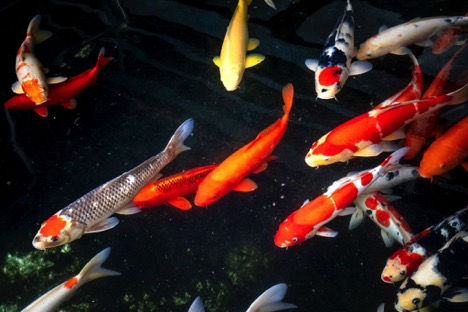
Different plants require different habitats to flourish, and the ones that prefer to grow in or close to a body of water are known as hydrophytes or macrophytes. Those that favor a pond’s ecosystem can be divided into four categories.
Emergent plants
These aquatic plants have tall and stiff stems that are rooted into the pond’s base. Their stems ensure that they stay erect and above water level at all times. However, they might get submerged when water levels rise. This can happen following a lengthy spell of rain or another event that adds to the pond’s water. Emergent plants are capable of surviving in water that exceeds their crown by zero to six inches. The crown is the part of a plant that is above the soil. Arrowhead, Blue Flag, Beaksedge, Bur Marigold, Cattail, Lily Pads, Combleaf Mermaidweed, and Alligator Weed are different emergent plants.
Since a part of these plants is within the water, they contribute to the wildlife pond’s oxygen content.
Floating plants
You will immediately identify a floating plant when you see it gently gliding over the pond’s surface. Their roots hang under them unattached to the pond’s base, as they have no need for soil. However, certain hydrophytes, like Lily pads, can have you fooled. They might appear to be floating, but since their roots are planted into the pond’s base, they are categorized as emergent plants. Floating plants include Mosquito Fern, Bladderwort, Dotted Duckweed, Floating Crystalwort, Rooted Water Hyacinth, Water Lettuce, and more.
Floating plants prevent excessive algae growth across the pond’s surface by taking up most nutrients. They also offer shade to the other inhabitants of your wildlife pond.
Submerged plants
Plants that hail from this category have most of their vegetative mass present underwater. They are rooted in the pond’s soil and have flaccid stems and branches. You might find some that have small parts like leaves or flowers poking above the water’s surface,
When it comes to ponds, especially wildlife ones that do not have a pump, submerged plants serve as a potent source of oxygen. The reason is obvious: they are entirely present inside the water, so all the oxygen they release dissolves into said water. Examples of submerged plants are Baby Pondweed, Brittle Waternymph, Eurasian Watermilfoil, Eelgrass, Asian Marshweed, Hornwort, and Marine Naiad.
Bog plants
These plants prefer to grow in damp soils similar to that surrounding a pond. Only their roots are found submerged in water, while the rest of the vegetative mass is present above water. Bog plants aren’t the biggest contributor of oxygen among the various pond plants, but that does not mean their contribution to the ecosystem is unimportant. Osmunda regalis, Candelabra primulas, pitcher plants, Iris laevigata, Filipendula rubra, Lythrum salicaria, and Lobelia cardinalis are some gorgeous bog plants that will elevate the look of your small wildlife pond.
Factors that deplete your wildlife pond of oxygen and how to counter them
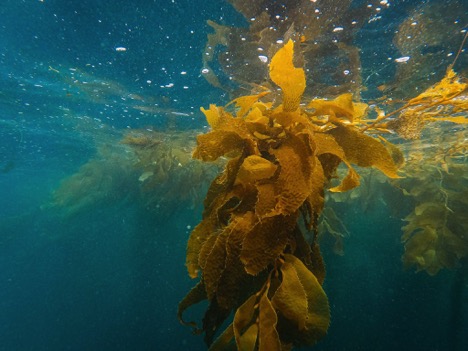
A wildlife pond might not require as much oversight and equipment as other artificial ponds, but you still need to keep a regular check and balance to ensure that nothing disrupts its ecosystem. There are multiple reasons why that can happen, and you can prevent it if you know what to look for.
- When prepping the ground to install the pond, make sure to get the optimal surface-to-depth ratio. If your pond ends up being too deep with a narrow surface area exposed to the atmosphere, the water will never get adequate amounts of oxygen. This is because, at any given time, only a small amount of gasses will manage to diffuse from the atmosphere into the water, creating a gap in supply and demand.
- The oxygen saturation of cold water is higher than in hot water, so you need to be extra cautious on hot days of the year. When choosing a location for your pond, try and pick one under the shade of trees; this way, the water will be less exposed to sunlight. If your pond is not under shady trees, you can invest in a shade sail to cover it or use a tarp to obscure a part of it. Another effective trick is to introduce wide-leafed emergent or floating plants to your wildlife pond.
- You don’t just have to worry about the lack of oxygen; the accumulation of carbon dioxide is also detrimental to the pond’s ecosystem. While plants take up carbon dioxide and release oxygen during the day, the situation reverses at nighttime. Normally, carbon dioxide diffuses from the pond’s surface into the atmosphere, but when there is too much of it, being a heavy gas, it settles at the bottom. This leads to dangerously low levels of oxygen in the water at the bottom, proving fatal for the bacteria and microphytes. If allowed to exacerbate the situation might kill the aquatic animals in your pond.
- Rampant algae growth can also disrupt the environment of your wildlife pond. Algal mats form on the surface of water owing to an imbalance of different factors. The combination of excess nutrients, too much sunlight, and inadequate filtration promotes the growth of algae. Large chunks floating atop the pond prevent sunlight from reaching the inhabitants, block the diffusion of oxygen into and carbon dioxide out of the water, and generate a foul odor. It is crucial that you keep your ponds mostly algae-free.
Thoughts

It should be evident by now that a wildlife pond requires minimal input to establish a thriving ecosystem on its own. However, to make sure that it thrives, you have to be extra thoughtful about the steps you take when building it. The dimensions, flora and fauna, and location all need to be right for the wildlife pond to sustain itself. It might not need as much upkeep as a fish pond, but it still requires you to monitor the important factors regularly, such as oxygen levels, plant and algae growth, etc. As far s a pond pump is concerned, wildlife ponds are capable of surviving without them, but you can choose to install one if your pond has fish. Regardless, know that nature will appreciate your contribution to the environment.


